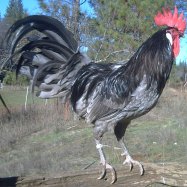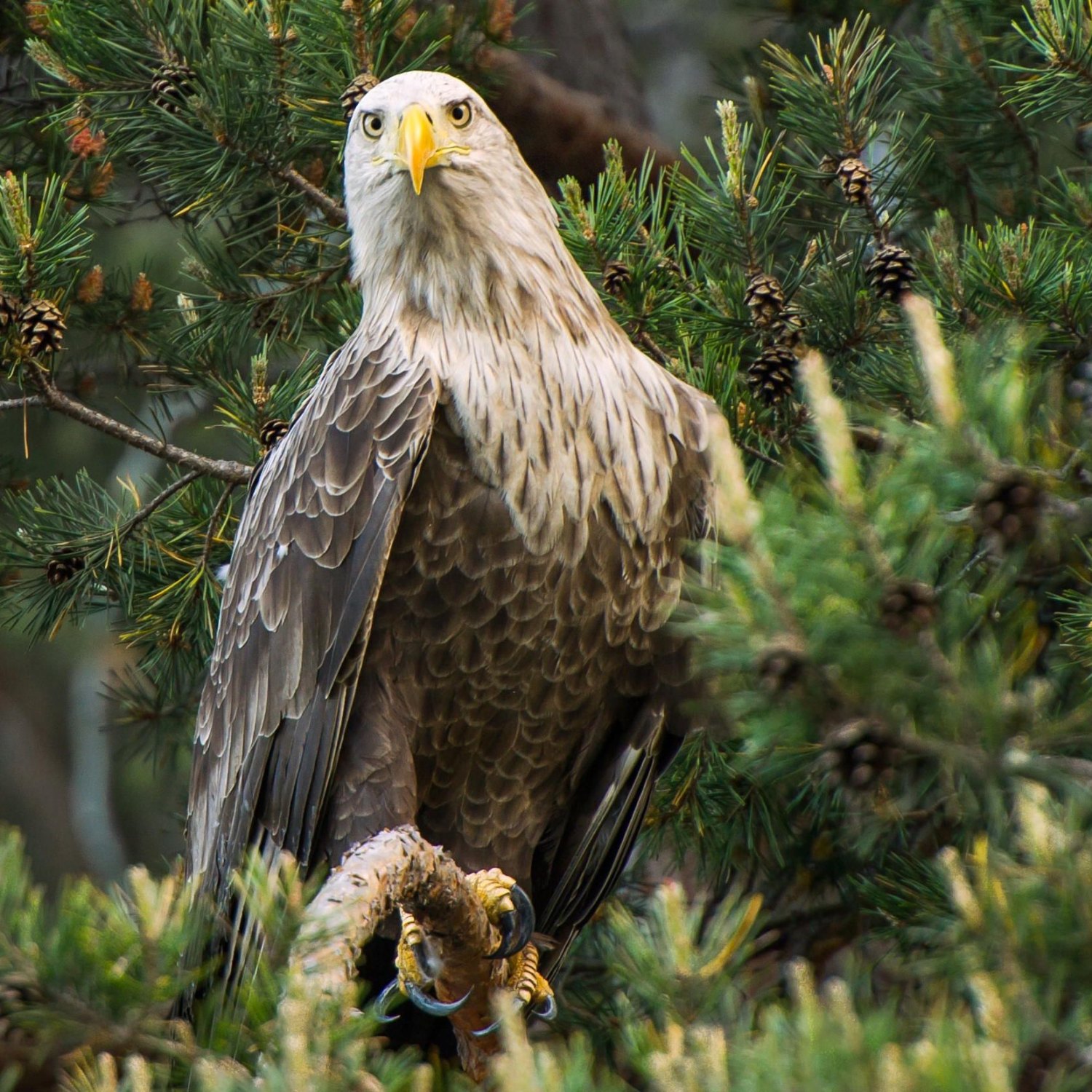
White Tailed Eagle
70-92 cm
The White Tailed Eagle, also known as the Sea Eagle, is a majestic bird of prey found in the Northern Hemisphere. With a length of 70-92 cm and a body shape resembling a large bird with broad wings and a long, wedge-shaped tail, this member of the Accipitridae family is a sight to behold. Keep an eye out for this impressive creature in its natural habitat. #WhiteTailedEagle #BirdsOfPrey #NorthernHemisphere
Animal Details Summary:
Common Name: White-tailed Eagle
Kingdom: Animalia
Habitat: Coastlines, wetlands, and large inland lakes
The Mighty Hunter: Getting to Know the White-Tailed Eagle
The world is full of incredible creatures, each with their unique adaptations, habitats, and behavior. One such remarkable animal is the White-Tailed Eagle (Haliaeetus albicilla), also known as the Sea Eagle or the Erne. It is one of the largest birds of prey in the Northern Hemisphere, with a wingspan of up to 2.45 meters (8 feet) White Tailed Eagle. In this article, we will dive deep into the world of the White-Tailed Eagle – from its physical characteristics to its hunting techniques and everything in between.An Introduction to the White-Tailed Eagle
Found in the kingdom Animalia and the phylum Chordata, the White-Tailed Eagle belongs to the class Aves, order Accipitriformes, and family Accipitridae. It is a carnivorous bird, with a widespread distribution in Eurasia, and is the largest bird of prey in Europe.The White-Tailed Eagle gets its name from the distinct white coloring on its head and tail. However, it does not acquire this iconic plumage until it reaches about 5 years of age. As juveniles, these eagles have a mostly dark brown coloration, with mottled white patches on their backs and wings. They also have brown eyes and beaks, which gradually turn yellow as they mature.
These magnificent birds have a large body, measuring 70-92 cm in length. They weigh between 3 Woolly Rhinoceros.2 to 7.5 kg, with females being larger than males. The wingspan of the White-Tailed Eagle can reach up to 2.45 meters, making it one of the largest birds of prey in the world.
Habitat: Where Can You Find a White-Tailed Eagle?
The White-Tailed Eagle can be found in a variety of habitats, including coastlines, wetlands, and large inland lakes. They have a preference for remote, undisturbed areas and can be seen soaring over mountains, cliffs, and marshes.These eagles are known for their impressive hunting skills, and their habitat plays a crucial role in their hunting success. They require large open areas to spot their prey from a distance and take off from high perches, such as trees or cliffs. Due to their broad wings and long tails, they are well adapted to maneuvering in open spaces, and their keen eyesight allows them to spot their prey from great heights.
White-Tailed Eagles are primarily found in the Northern Hemisphere, with the majority of the population being concentrated in Europe and Russia. However, they also occur in other regions, including Greenland, Iceland, and parts of Asia.
A Predatory Lifestyle: How the White-Tailed Eagle Hunts
As mentioned earlier, the White-Tailed Eagle is a carnivorous bird, and its diet mainly consists of fish, water birds, small mammals, and carrion. These eagles are opportunistic hunters and will prey on whatever is readily available in their habitat.Their hunting technique is impressive, to say the least. They are known to fly at great heights, scanning the ground and water for potential prey. Once they spot a target, they dive straight down at breakneck speeds, using their sharp talons to grab their prey. They can also use their long, wedge-shaped tail to help them control their descent.
One of the most astounding hunting techniques of the White-Tailed Eagle is known as "sky dancing." During the breeding season, two eagles will engage in a beautiful aerial display, where they lock their talons together and freefall towards the ground. Just before reaching the ground, they will spread their wings and soar back into the sky, still connected by their talons. This behavior is believed to strengthen the pair bond between breeding eagles.
A Conservation Success Story
For centuries, the White-Tailed Eagle was considered a symbol of strength and power in many European cultures. However, these magnificent birds were relentlessly hunted for their feathers and eggs, leading to a significant decline in their population. By the early 20th century, the White-Tailed Eagle was close to extinction.Fortunately, efforts were made to conserve this species, and today, the White-Tailed Eagle is no longer considered endangered. With strict hunting regulations and successful reintroduction programs in various parts of Europe, the global population of White-Tailed Eagles is estimated to be around 10,000 individuals.
In Norway, where the White-Tailed Eagle is the national bird, a successful reintroduction program was initiated in the 1960s. Today, the population has grown to over 2,000 breeding pairs, making it one of the world's largest concentrations of White-Tailed Eagles.
The Ecological Role of the White-Tailed Eagle
Apart from their stunning appearance and hunting capabilities, White-Tailed Eagles play a vital ecological role. They are considered apex predators, which means they are at the top of the food chain within their habitat. As such, their presence is a crucial factor in maintaining the balance of the ecosystem.White-Tailed Eagles also play a vital role in controlling the population of their prey species. By preying on fish, birds, and small mammals, they limit their numbers, preventing overpopulation. This, in turn, helps maintain a healthy ecosystem and ensures the survival of other species within their habitat.
The Threats Facing the White-Tailed Eagles
While the White-Tailed Eagle has made an outstanding recovery due to conservation efforts, it still faces several threats.One of the main threats to these eagles is habitat loss. As more and more natural areas are being developed for human use, the eagles lose their foraging and breeding grounds. This puts a strain on their population, making it challenging for them to find food and suitable nesting sites.
Another significant threat is the use of pesticides, which can accumulate in the eagles' prey, leading to their poisoning. Ingestion of lead pellets used in hunting can also be fatal for these birds.
Climate change is also a cause for concern, as it affects the eagles' food sources and nesting locations. Changes in temperature and precipitation patterns can lead to a decline in fish populations, negatively impacting the eagles' food supply.
Conclusion: The Pride of the Skies
In conclusion, the White-Tailed Eagle is a true epitome of strength, grace, and resilience. Despite facing several challenges, these birds have made a remarkable comeback, and their numbers continue to grow. They play an essential ecological role and are a valuable part of many cultures and traditions.The survival of the White-Tailed Eagle is a testament to the power of conservation efforts and serves as a reminder to protect and preserve our natural world. As we continue to share the planet with these majestic birds, let us do our part in ensuring their survival for generations to come. After all, the skies wouldn't be the same without the mighty hunter – the White-Tailed Eagle.

White Tailed Eagle
Animal Details White Tailed Eagle - Scientific Name: Haliaeetus albicilla
- Category: Animals W
- Scientific Name: Haliaeetus albicilla
- Common Name: White-tailed Eagle
- Kingdom: Animalia
- Phylum: Chordata
- Class: Aves
- Order: Accipitriformes
- Family: Accipitridae
- Habitat: Coastlines, wetlands, and large inland lakes
- Feeding Method: Carnivorous
- Geographical Distribution: Eurasia
- Country of Origin: Norway
- Location: Northern Hemisphere
- Animal Coloration: Dark brown body with white head and tail, adults have yellow beak and eyes
- Body Shape: Large bird with broad wings and a long, wedge-shaped tail
- Length: 70-92 cm
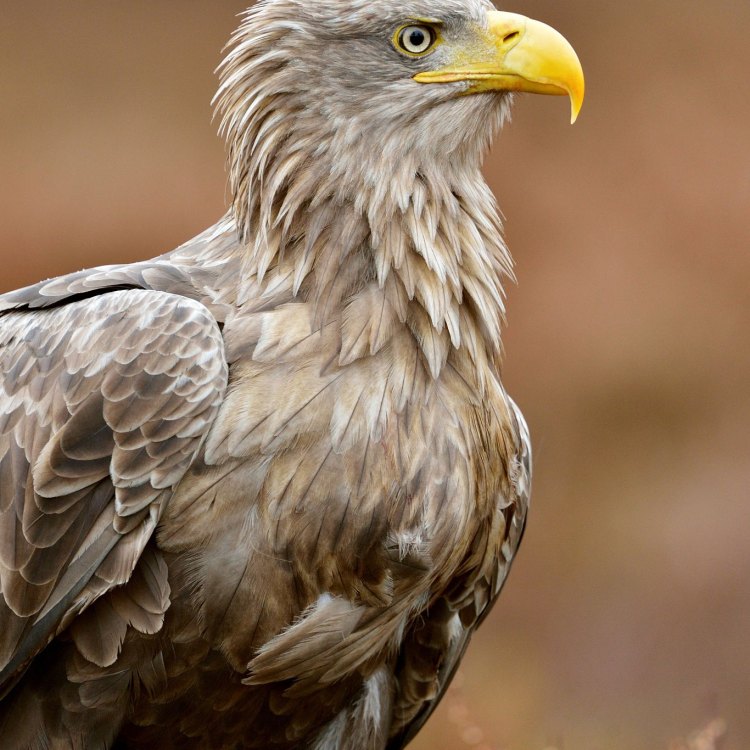
White-tailed Eagle
- Adult Size: Wingspan of 180-240 cm
- Average Lifespan: 25-28 years
- Reproduction: Sexual
- Reproductive Behavior: Monogamous, builds large nests on top of tall trees or cliffs
- Sound or Call: High-pitched whistles and barks
- Migration Pattern: Migratory, breeding in the northern parts and wintering in more southern regions
- Social Groups: Solitary or in pairs during breeding season
- Behavior: Strong fliers, skilled hunters, known for their impressive aerial displays
- Threats: Habitat loss, hunting, pollution, and poisoning
- Conservation Status: Least Concern
- Impact on Ecosystem: Apex predator in its habitat, helps maintain the balance of the ecosystem
- Human Use: Tourism, birdwatching
- Distinctive Features: White tail feathers, large size, powerful beak and talons
- Interesting Facts: It is the largest bird of prey in Europe, capable of carrying prey weighing up to 15 pounds (6.8 kg).
- Predator: No natural predators
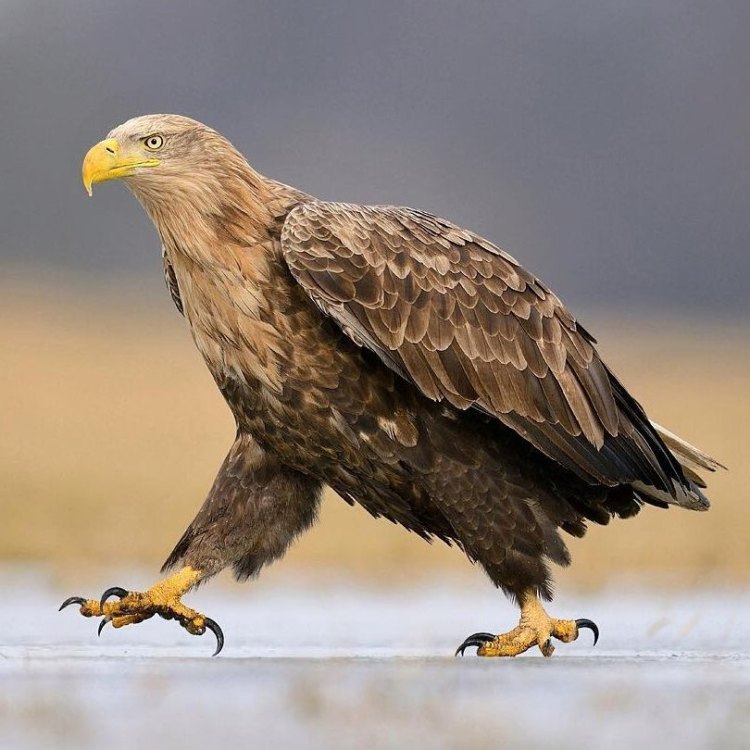
Haliaeetus albicilla
About the White Tailed Eagle
In the world of birds of prey, the White Tailed Eagle stands out as a symbol of strength, grace, and resilience. Known by its scientific name Haliaeetus albicilla, this magnificent bird is also called the Sea Eagle or the Eurasian Sea Eagle. It is a majestic species that captures the imagination of wildlife enthusiasts and photographers alike, with its impressive size, striking appearance, and remarkable behaviors. Let's delve into the fascinating world of the White Tailed Eagle and learn about its unique features, behaviors, and impact on the ecosystem PeaceOfAnimals.Com.Physical Characteristics
Adult White Tailed Eagles are truly impressive creatures, with a wingspan that ranges from 180 to 240 centimeters (5.9 to 7.9 feet) and a weight of up to 7 kilograms (15.4 pounds). They have a distinctive white tail that contrasts with their dark brown body and piercing yellow eyes that give them a fierce and regal look. These birds also have a powerful beak and sharp talons, used for catching and carrying prey.Lifespan and Reproduction
The average lifespan of a White Tailed Eagle is between 25 to 28 years in the wild. They reach reproductive maturity at around 4 to 5 years of age and then mate for life. These birds are known for their monogamous and faithful relationships, with pairs staying together throughout the breeding season, and sometimes even for many years Wolverine.Reproductive Behavior
Breeding season for White Tailed Eagles typically starts in late winter or early spring, from March to June. These birds build large, sturdy nests on top of tall trees or cliffs, with a diameter of up to 2 meters (6.5 feet) and a height of 1.5 meters (5 feet). The female lays 1 to 3 eggs, and both parents take turns incubating them for about 40 days. After hatching, the chicks are fed and cared for by both parents for about 10 weeks, until they are ready to leave the nest.Sounds and Calls
White Tailed Eagles are not very vocal, but they do make high-pitched whistles and barks, especially during the breeding season. These vocalizations are used to communicate with their mates and offspring and to warn other eagles of potential intruders in their nesting area.Migration Pattern
White Tailed Eagles are migratory birds, with their breeding grounds in the northern parts of Europe and Asia, and their wintering grounds in more southern regions. In the autumn, they migrate from their breeding grounds to their wintering grounds, which are often near large bodies of water where they can easily find food. They return to their breeding grounds in the spring to reproduce.Social Behavior
During the breeding season, White Tailed Eagles are usually solitary or in pairs, fiercely guarding their nesting territory. However, outside of the breeding season, they may congregate in groups at feeding sites. White Tailed Eagles are also known to exhibit territorial behaviors, defending their space from other birds of prey.Behavior
White Tailed Eagles are strong fliers, skilled hunters, and are known for their impressive aerial displays. They often soar high in the sky, using thermal currents to conserve energy while searching for prey. Once they spot their prey, they swoop down at high speeds to grab it with their powerful talons. They are apex predators in their habitat, playing a crucial role in controlling the population of their prey species.Threats and Conservation Status
Despite their grandeur, White Tailed Eagles are not immune to threats. Habitat loss, hunting, pollution, and poisoning are some of the main factors that have threatened their population in the past. In the 19th and 20th centuries, this bird was nearly extinct in many parts of Europe. However, thanks to conservation efforts and protective measures, the White Tailed Eagle is now listed as "Least Concern" on the IUCN Red List, with a growing population trend.Impact on the Ecosystem
As apex predators, White Tailed Eagles play a vital role in maintaining the balance of the ecosystem. By keeping the population of their prey species in check, they help prevent overgrazing and overpopulation, allowing other species to thrive. This bird also acts as an indicator of the health of the environment, making it an essential part of its ecosystem.Human Use and Interesting Facts
Humans have been fascinated by the White Tailed Eagle for centuries, and these birds have been featured in art, literature, and legends around the world. In some cultures, the White Tailed Eagle is considered a symbol of power, wisdom, and freedom. In recent years, this bird has also become a popular tourist attraction, with many people traveling to see and photograph them in their natural habitats.Did you know that the White Tailed Eagle is the largest bird of prey in Europe? It is also one of the largest eagles in the world, with a wingspan that can reach up to 240 centimeters (7.9 feet). Another interesting fact about this bird is its impressive strength, as it can carry prey weighing up to 15 pounds (6.8 kg)!
Predators
With its size, sharp talons, and powerful beak, the White Tailed Eagle has no natural predators. However, humans have been a major threat to them in the past, with hunting and poisoning causing a decline in their population. Today, stricter laws and conservation efforts have helped protect this magnificent bird.In Conclusion
The White Tailed Eagle is an iconic and remarkable bird of prey, with its impressive size, striking appearance, and unique behaviors. Throughout history, it has captured the hearts and minds of people, and today it continues to play a significant role in maintaining the balance of the ecosystem. With conservation efforts in place, we can hope to see these majestic birds continue to soar high in the sky for generations to come.
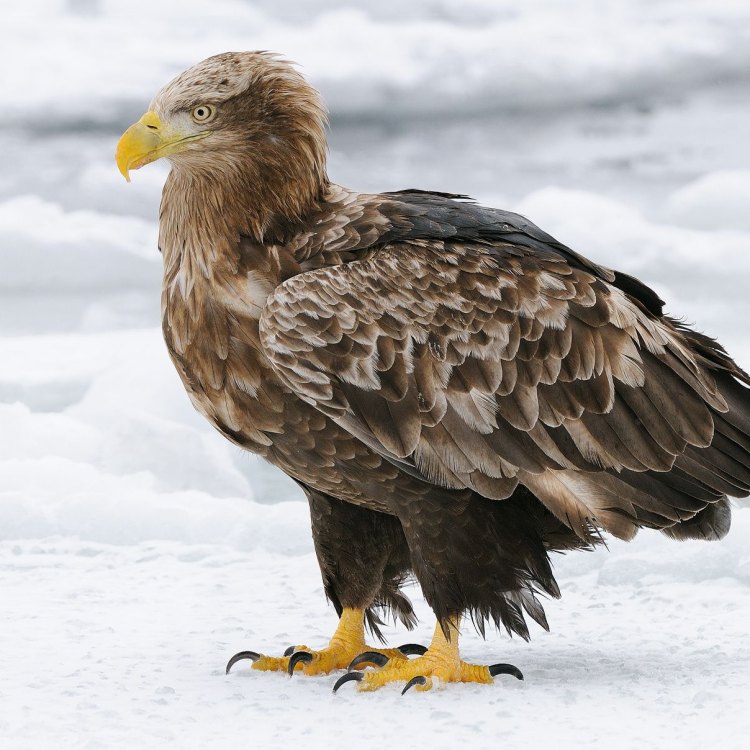
The Mighty Hunter: Getting to Know the White-Tailed Eagle
Disclaimer: The content provided is for informational purposes only. We cannot guarantee the accuracy of the information on this page 100%. All information provided here may change without prior notice.







